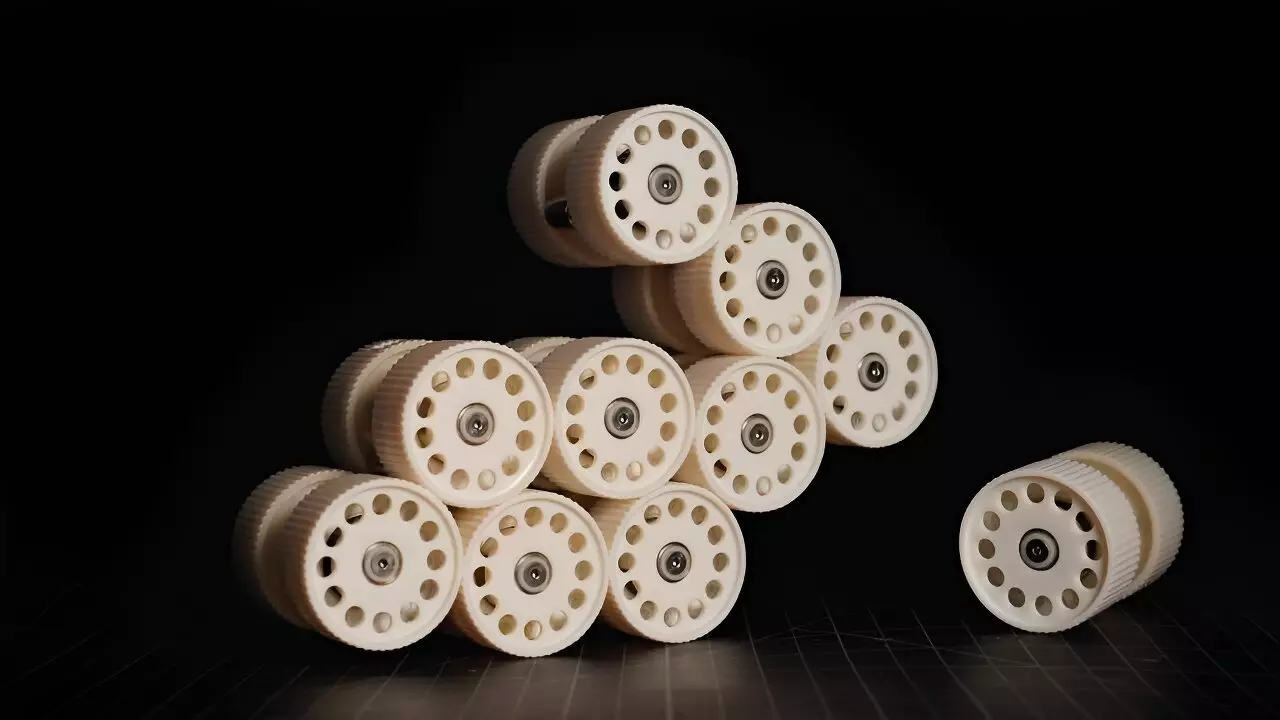The phenomenon of swarming is a fascinating concept observed in various species in nature. From schools of fish to colonies of bees and murmurations of starlings, swarming behavior involves coordinated movements that mimic the flow of a liquid. Physicists like Heinrich Jaeger and Baudouin Saintyves have delved into the intricacies of swarming through the lens of fluid mechanics. Their research aims to apply physics principles to the development of modular, adaptive robotics.
Jaeger and Saintyves have recently unveiled their groundbreaking creation known as the “Granulobot.” Inspired by the fluid-like capabilities of swarms, this innovative robot has the ability to split apart, reassemble, and adapt to its environment. By leveraging the unique design of simple, cylindrical, gear-like units with magnets, the Granulobot can transition between acting as a rigid solid or a flowing liquid. This versatility blurs the boundaries between soft, modular, and swarm robotics, making it a game-changer in the field.
Soft robotics, as highlighted by Jaeger, offer a safe and versatile alternative for robots that interact with humans. The ability to change shape allows soft robots to navigate challenging terrains or access tight spaces, making them ideal for applications like search and rescue missions. The Granulobot’s capacity to fluctuate between rigidity and softness provides a predictable and reversible transformation, crucial for its functionality.
Granular materials play a key role in enabling the Granulobot’s shape-shifting abilities. Unlike traditional materials that rely on temperature changes for phase transitions, granular materials can transition between liquid and solid states based on contact. This behavior is driven by the concept of jamming, where closely packed particles inhibit flow, akin to a traffic jam. Jaeger’s analogy of a highway traffic jam effectively illustrates the principle of jamming in granular materials.
One of the notable aspects of the Granulobot is its scalability. While the current prototype consists of relatively larger units, Jaeger envisions a future where thousands of tiny units can operate collectively as a single entity. The potential for scaling the Granulobot opens up exciting avenues for exploration, from minuscule modules to massive structures. Additionally, the adaptability of the Granulobot to various environments, including underwater or outer space, showcases the universality of the physics principles underlying its design.
While the Granulobot represents a significant leap forward in robotics, Jaeger and Saintyves emphasize its broader implications. By exploring self-coordination and energy transfer within the environment, the Granulobot blurs the line between programmable materials and autonomous robots. This continuum opens up new possibilities for reimagining our understanding of matter and its interactions. As physicists, Jaeger and Saintyves are not only shaping the future of robotics but also pushing the boundaries of how we perceive and manipulate the physical world.
The Granulobot stands as a testament to the innovative fusion of physics, robotics, and materials science. Its ability to seamlessly transition between states, adapt to diverse environments, and operate at varying scales showcases the immense potential of soft, modular robotics. As researchers continue to explore the capabilities of the Granulobot, we can anticipate further advancements that will revolutionize not only the field of robotics but also our fundamental understanding of material behavior.


Leave a Reply